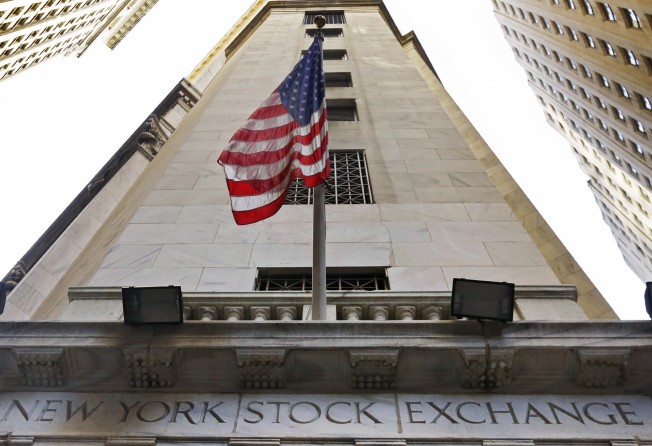
The calm before the storm in stock markets, or the storm before the calm?
Central banks’ monetary stimulus has helped stocks surge to record levels, but the question now is what happens when the withdrawal of that liquidity begins in earnest

Hardly a day goes by without a warning of the dangers of elevated valuations in financial markets.
Signs of froth have been evident in many parts of the markets for some time but are coming under increasing scrutiny because of the withdrawal of monetary stimulus by the world’s leading central banks, led by the United States’ Federal Reserve.
In its latest quarterly review published in September, the Bank for International Settlements warned that asset prices remain heavily dependent on the ultra-low yields on government bonds stemming from years of extraordinarily loose monetary policy. Prices continue to rise, moreover, because of the “unprecedentedly gradual pace of policy normalisation” and, more worryingly, because of international investors’ “belief that central banks will not remain on the sidelines should unwanted market tensions arise.”
If the BIS is correct in its assessment of market conditions – central banks’ fear of tightening policy too aggressively and the seemingly never-ending succession of fresh record highs in global equity markets suggest it is – then concerns about asset price bubbles will only intensify in the coming months.
Just in the last few weeks, corners of the market where valuations have become the most stretched have come under strain because of growing nervousness about markets priced for perfection.
Last week, US high-yield, or “junk”, bond funds suffered their second consecutive week of outflows and the largest withdrawal of money in two years, according to data from Bank of America Merrill Lynch. Year-to-date flows into the frothy US non-investment grade corporate debt market, where spreads, or the risk premium, recently reached their tightest levels since the 2008 financial crisis, are now in negative territory.
Another major area of concern is US stocks which last week hit another fresh all-time high, buoyed by rapid gains in technology and energy stocks. According to the most popular valuation measures, US equities are significantly overvalued. Based on the so-called cyclically adjusted price-to-earnings ratio, or CAPE, which compares stocks to their average earnings over the previous 10 years, US shares have not been this expensive since the months leading up to the Wall Street crash of 1929 and the bursting of the dotcom bubble in 2000.
This year’s explosive rally in Chinese equities is an even bigger source of anxiety, especially after last Thursday’s abrupt sell-off, the sharpest one-day decline since June 2016. The MSCI China index, which groups companies listed outside China and has been turbocharged by the dramatic gains in Chinese internet shares, is up a staggering 55 per cent this year. Moreover, China’s quoted technology firms are already 75 per cent more expensive than their US peers, according to the Financial Times.

Yet last week’s wobble in Chinese stocks was caused by the recent sell-off in the country’s bond market, underscoring the extent to which the direction of asset prices hinges critically on what happens in global debt markets.
The main reason the rally in risk assets, particularly equities, has endured despite periodic bouts of selling pressure is because interest rates remain at historically low levels. As I explained in an earlier column, monetary policy is still extremely loose, with other leading central banks yet to call time on their quantitative easing programmes. The “great unwind” has barely begun.
Provided short- and long-term interest rates stay low – the combination of subdued inflation and structural factors exerting downward pressure on bond yields suggests they will, with roughly a fifth of the global stock of government bonds still trading in negative territory, according to data from JPMorgan – valuations could remain at high levels, and even rise further. Broad-based economic growth around the world and healthy corporate profits are providing additional fuel for the rally.
This is why many prominent investors, even traditionally bearish ones such as Jeremy Grantham, the founder of GMO, a large asset manager, believe a major market correction is still some way off. They are probably right, but this raises some troubling questions, to say the least.
The most obvious one, given the extent to which years of aggressive monetary stimulus are responsible for today’s lofty valuations, is whether investors are underestimating the scope for increases in volatility and declines in asset prices once the policy normalisation process is more advanced.
Put simply, is this the calm before the storm?
Timing the market is a fool’s errand. It is unclear how much stimulus needs to be withdrawn – and by how many leading central banks – in order for markets to come under significantly more strain.
What is clear, however, is that, for the time being, one person’s asset bubble is another’s sustainable rally.
Nicholas Spiro is a partner at Lauressa Advisory